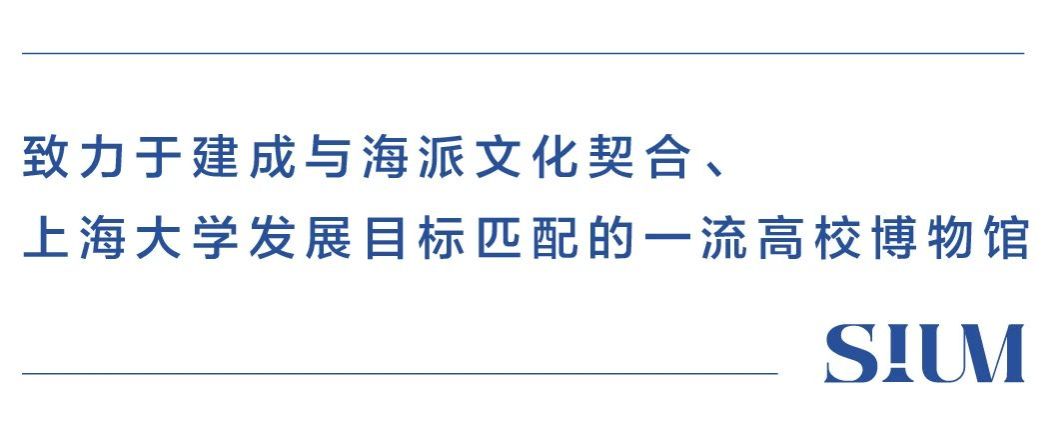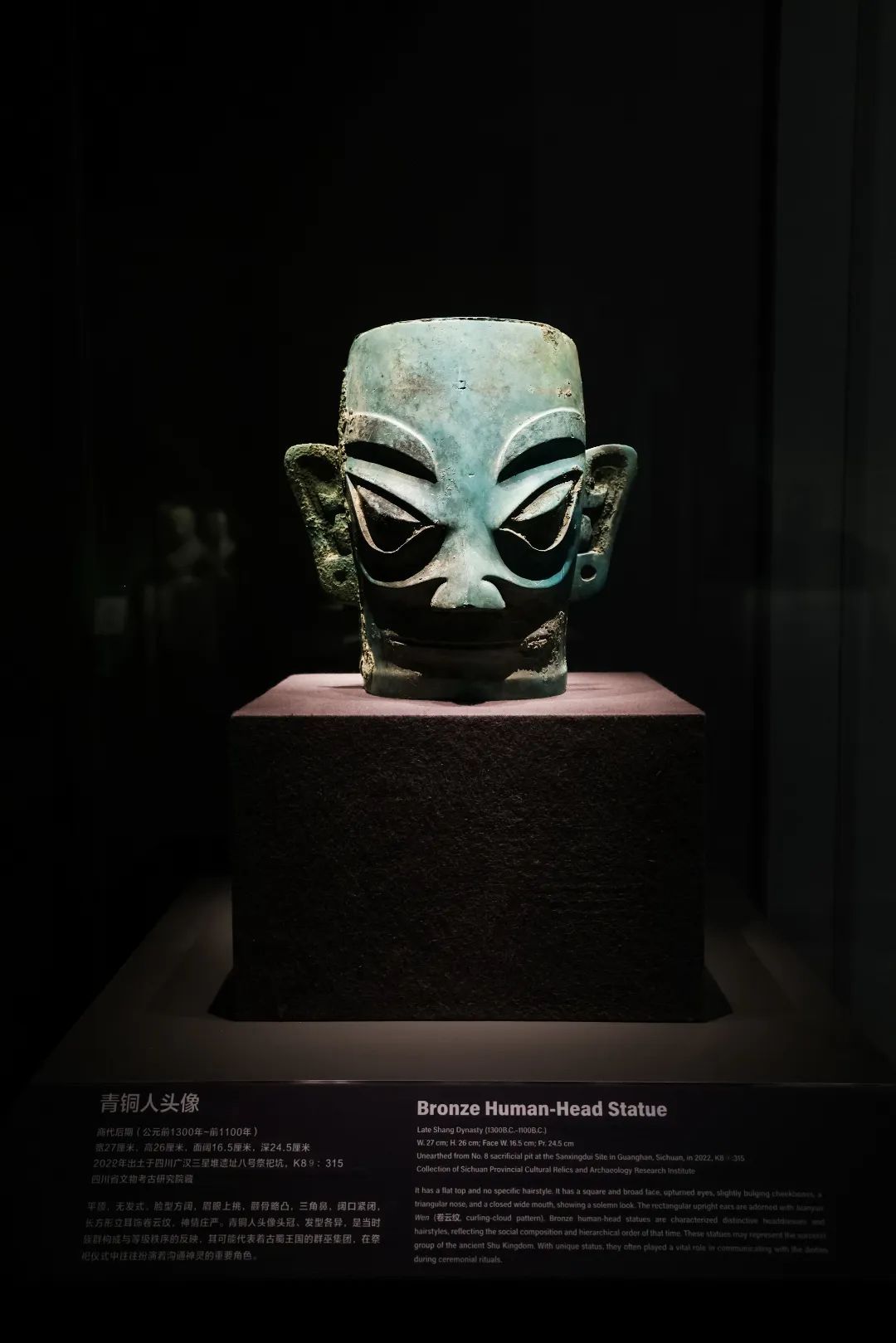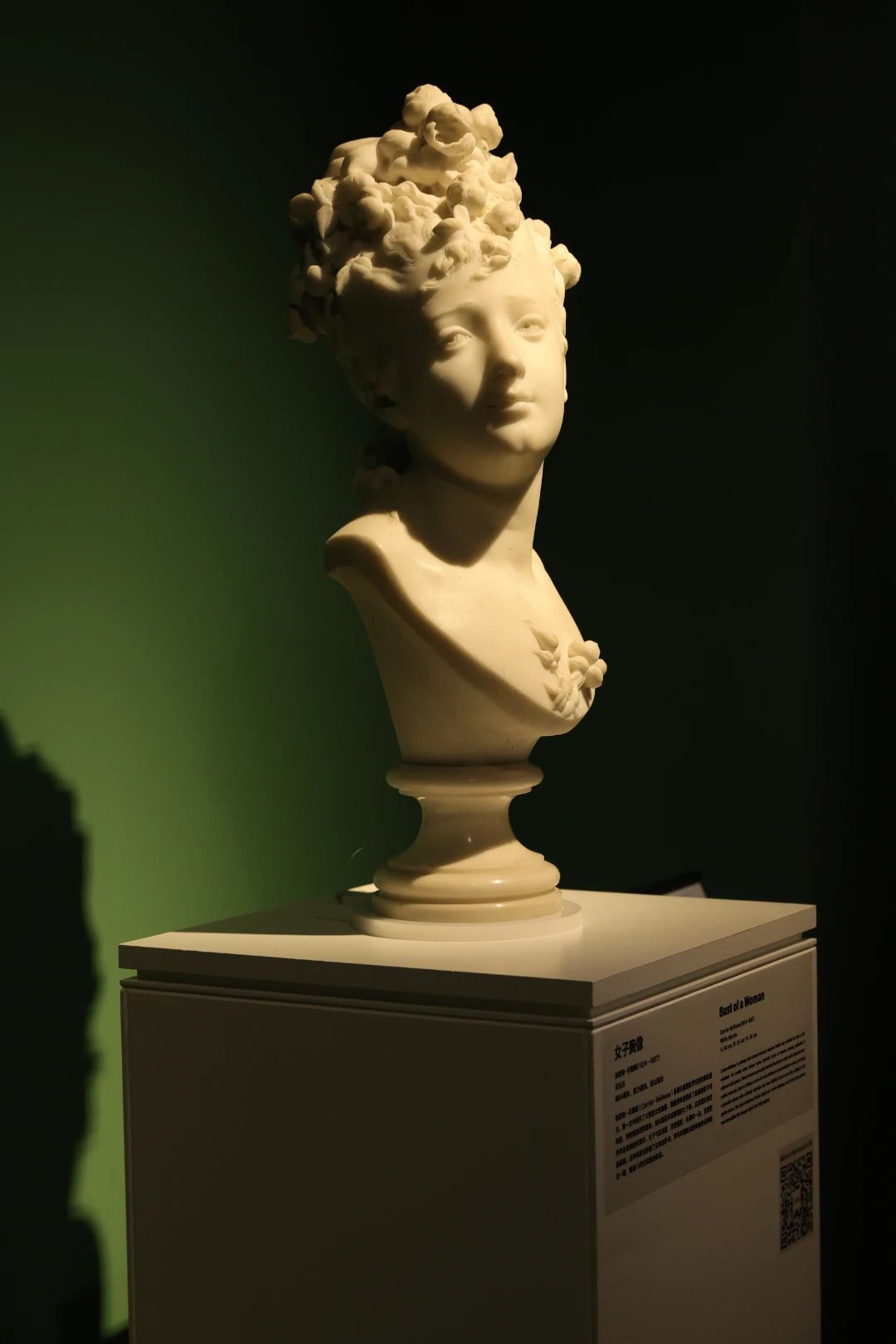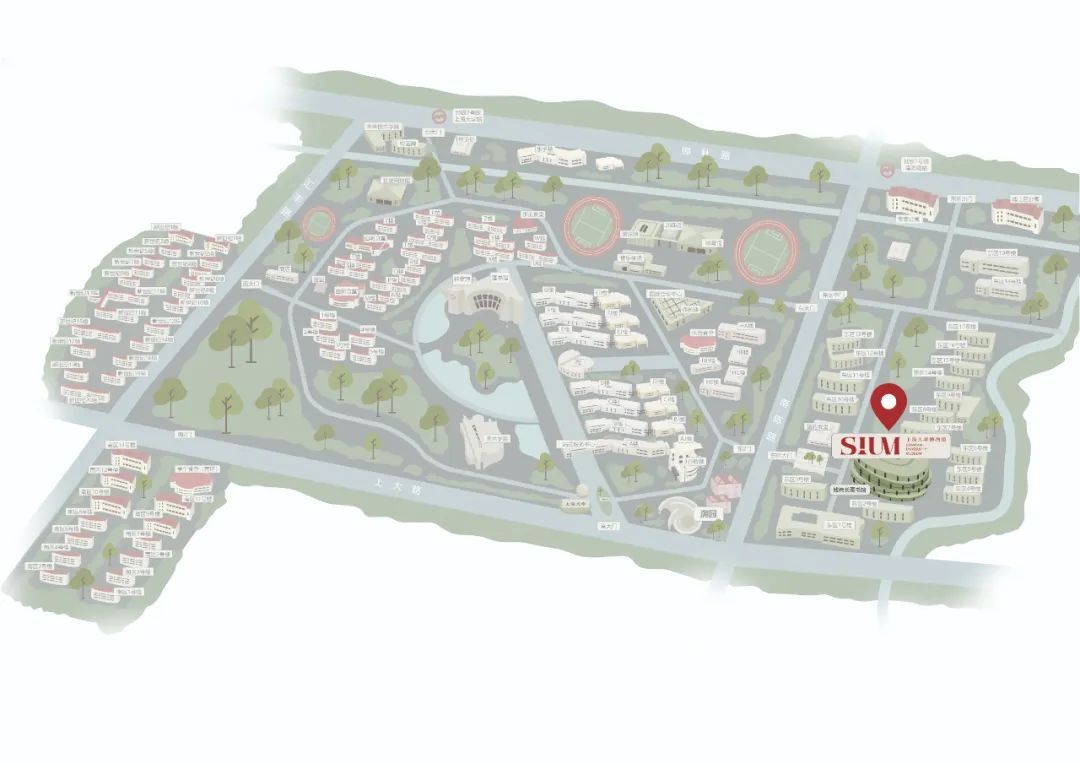
“沉睡三千年,一醒驚天下”的三星堆遺址,是中華文明璀璨星河中明亮而神奇的一顆⚽️。
羅丹是“現代雕塑之父”,他的作品中飽含對生命、自然的歌頌、熱愛與憂思🫶🏼。
在天美平台舉辦的特展——“青銅之光:三星堆與羅丹的超時空對話”展出了許多三星堆、金沙遺址出土文物和羅丹及其同時代雕塑家的作品👨🏽✈️,讓我們一起來詳細了解展品背後的故事吧!
青銅人頭像

· 商代後期(公元前1300年—前1100年)
· 寬27厘米☔️,高26厘米🧑🏻⚕️,面闊16.5厘米👨🏻🔧,深24.5厘米
· 2022年出土於四川廣漢三星堆遺址八號祭祀坑🧑🏻🎄,K8⑨🙆🏻♂️:315
· 四川省文物考古研究院藏
· Late Shang Dynasty (1300B.C.-1100B.C.)
· W. 27cm; H. 26cm; Face W. 16.5cm; Pr. 24.5cm
· Unearthed from No.8 sacrificial pit at the Sanxingdui Site in Guanghan, Sichuan, in 2022,K8⑨:315
· Collection of Sichuan Provincial Cultural Relics and Archaeology Research Institute
平頂,額前和腦後無發際線🐩,無發式🐢。臉形方闊💹,立刀眉👨🏼⚕️,眼睛上挑,顴骨略凸🩱,三角鼻,鼻梁較挺👨🏿🔧,鼻翼較寬,闊口緊閉,神情莊嚴。長方形立耳,耳廓有卷雲紋裝飾👨🏼🍳👨🏿🦰,兩耳垂上各有一穿孔👩🏿🏫,應是懸掛裝飾品之用。頭像左右兩側及後側上下各有兩個圓形小孔。青銅人頭像造型生動、內涵豐富,頭冠、發型各異🤽🏽🧚🏽,是當時族群構成與等級秩序的反映👤。目前的研究認為,其可能代表著古蜀王國的群巫集團,因身份特殊,在祭祀儀式中往往扮演著溝通神靈的重要角色。它們又是古蜀國統治階層的象征🧗♀️,為了得到祖先和眾神的庇佑👨🏿⚖️,向神靈偶像祭祀以加強神權和王權的影響和統治🗜👩🏼💻。
It has a flat top with no hairline at the forehead or head back and no specific hairstyle. It has a square and broad face, erecting and straight eyebrows, upturned eyes, slightly bulging cheekbones, a triangular nose with a straight bridge and wide nostrils, and a closed wide mouth, showing a solemn look. The rectangular upright ears are adorned with Juanyun Wen (卷雲紋, curling-cloud pattern), and each earlobe is pierced, likely for hanging ornaments. There are two small round holes on the left and right sides of the head and an additional two on the upper and lower parts at the back. Bronze human-head statues are characterized by vivid and rich representations, with distinctive headdresses and hairstyles, reflecting the social composition and hierarchical order of that time. Research shows that these statues may represent the sorcerer group of the ancient Shu Kingdom. With unique status, they often played a vital role in communicating with the deities during ceremonial rituals. They also emblematized the ruling class in the ancient Shu Kingdom. For the blessings of ancestors and deities, the ruling class of the ancient Shu Kingdom would conduct rituals and offer sacrifices to the divine idols, aiming to strengthen the influence and authority of the theocracy and kingship.
女子胸像

· 加裏埃-貝勒斯(1824—1887)
· 漢白玉
· 高64厘米,寬25厘米📓🚵♂️,深30厘米
· Carrier-Belleuse (1824-1887)
· White Marble
· H.64cm; W.25cm; Pr.30cm
加裏埃-貝勒斯(Carrier-Belleuse)是著名雕塑家羅丹的老師和雇主。他生於1824年🧖🏻♀️,童年時跟隨家人來到巴黎,並在此學習繪畫和雕塑。加裏埃-貝勒斯一生中創作了大量的女性胸像🔈,其雕塑風格繼承了此前的洛可可風格🍄🟫,有明顯的裝飾意味🧑🌾🏊🏽♂️,如頭戴花環或葡萄的女子等👰🏽。這裏展出的這件作品是他的代表作💞。女子氣質優雅,發型精致,頭側向一邊,顯得更加溫婉。這種風格也影響了後來的羅丹🚗👩🏽🚀,羅丹早期的風格和他的老師如出一轍,都是19世紀優雅的典範。
Carrier-Belleuse is perhaps best known because Auguste Rodin once worked for him as his assistant. He was born in 1824 and moved to Paris with his family during childhood, where he studied painting and sculpture. He created many female busts, typically busts of women wearing garlands or adorned with grapes. These artworks generally inherited the Rococo style with distinctive decorative elements. Bust of a Woman is one of Carrier-Belleuse’s representative works, portraying a graceful woman with a delicate hairstyle. Her head slightly turns to one side, adding to her gentle charm. This style influenced Rodin. Rodin and Carrier-Belleuse ran in the same groove and exemplified the elegant style in the 19th century.
展覽時間:
2023年12月13日至2024年2月1日
展覽地點:
天美平台一層臨展廳
(上海市寶山區南陳路333號)
開放時間:
周一至周日8:30-16:30(16:00停止入館)
校內師生憑本人一卡通入館👴,無需預約。
校外觀眾采取網上預約方式入館🏄,掃描下方二維碼或關註“天美平台”微信公眾號,點擊“個人預約”。

/地址/
上海大學博物館
(南陳路333號)
